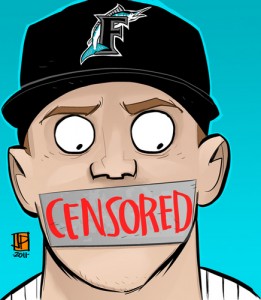In the wake of seeing what a lockout can do to a league, Major League Baseball has decided to peacefully and quietly get their Collective Bargaining Agreement done and guarantee baseball to it’s fans through 2016. While some things in the agreement seem superficial, like a “no tobacco tin in the back pocket while on the field” rule (no offense Raul Ibanez), there are also some important things to come out of this CBA.
One of those is a new MLB social media policy that will be subject to all players. This could mean doom for a certain number of players who currently enjoy their social freedom.
While the policy has not been released to the public, as is the standard for the MLB, there is a policy in place for managers and executives that was released earlier this year. After looking at that policy the Twitterverse can only hope the new one for the players contains more than six “donts”, as Wendy Thurm at SB Nation writes.
What the new MLB social media policy means going forward
While a simple list consisting of not displaying disparaging content or not using the nickname of any MLB entity as a Twitter handle may seem obvious at the surface, the new MLB social media policy should be considered very dangerous for Bud Selig and friends as a brand. Major League Baseball constantly fails in the social media world where the other big sport leagues succeed, mainly on YouTube and Twitter.
There is no better example than in this year’s World Series, widely considered one of the best in the last decade, when Joe Buck brought baseball fans a nostalgic moment by remembering his father, Jack. After David Freese’s dramatic game 6 walk-off home run Joe simply stated, “We will see you tomorrow night,” emulating his father after Kirby Puckett did the same in 1991 . How well did the MLB handle that? The mashup videos of Joe and Jack’s calls were taken down by the next morning for absolutely no one to enjoy. In contrast, the NBA has an official YouTube page where they post game clips, commercials and videos. They also let fans post what they have missed without the thought of taking it down 4 hours later.
MLB Social Media Policy – The Twitter Effect
An extension of the failure to communicate with fans by the MLB occurs on Twitter, where they have a million fewer followers than the NFL and 1.5 million fewer supporters than the NBA. This will certainly not be helped if they use the same policy in place now on the players and hinder the creative minds of players like Logan Morrison or the humanitarian efforts of players like Cole Hamels. Social media is quickly becoming the way to meet celebrities (the mention tweet is the the new autograph!) and if the MLB social media policy falls behind it’s big sport competitors it won’t belong before they find themselves behind in every other fan-following area as well.
What are your thoughts about the new MLB social media policy? Comment below to get the discussion started!


One Response to How The New MLB Social Media Policy Affects Players